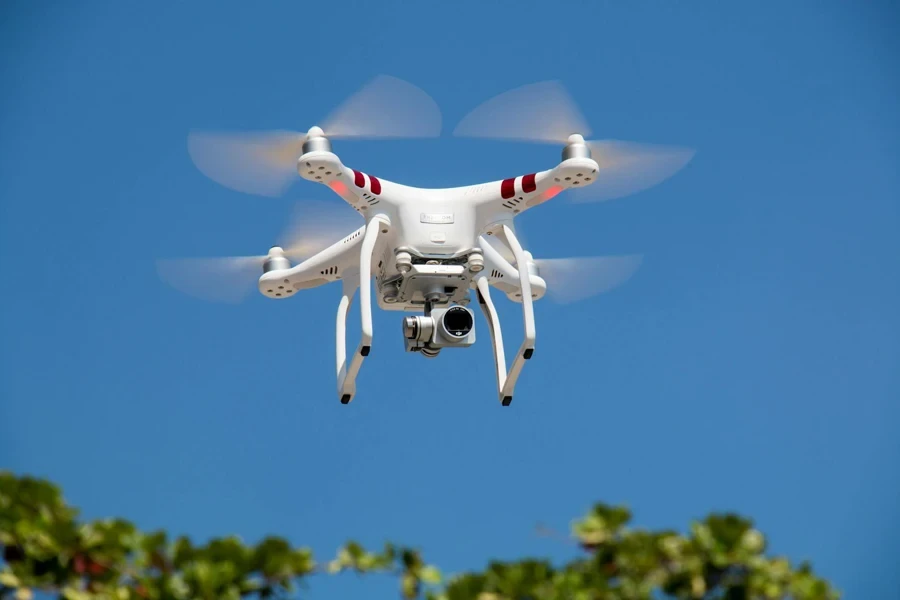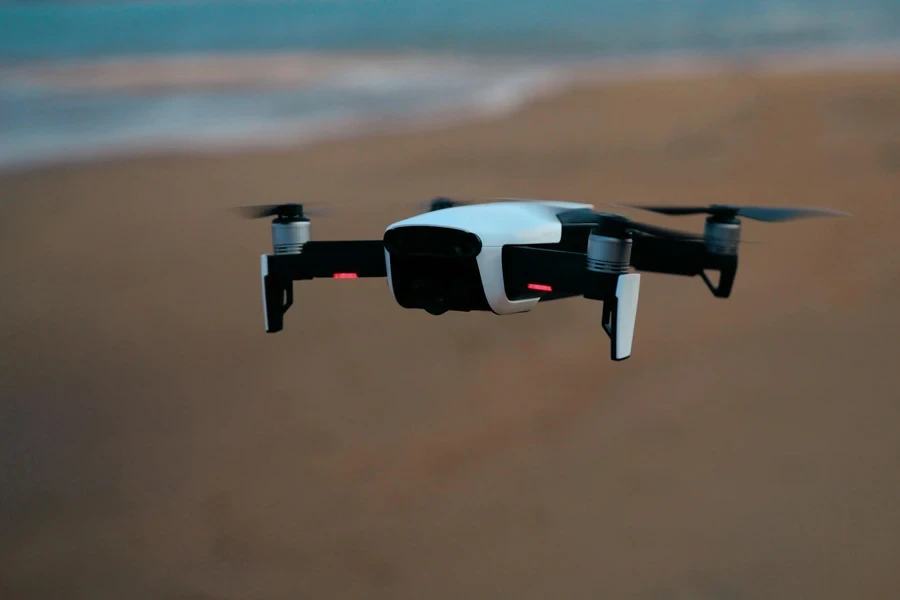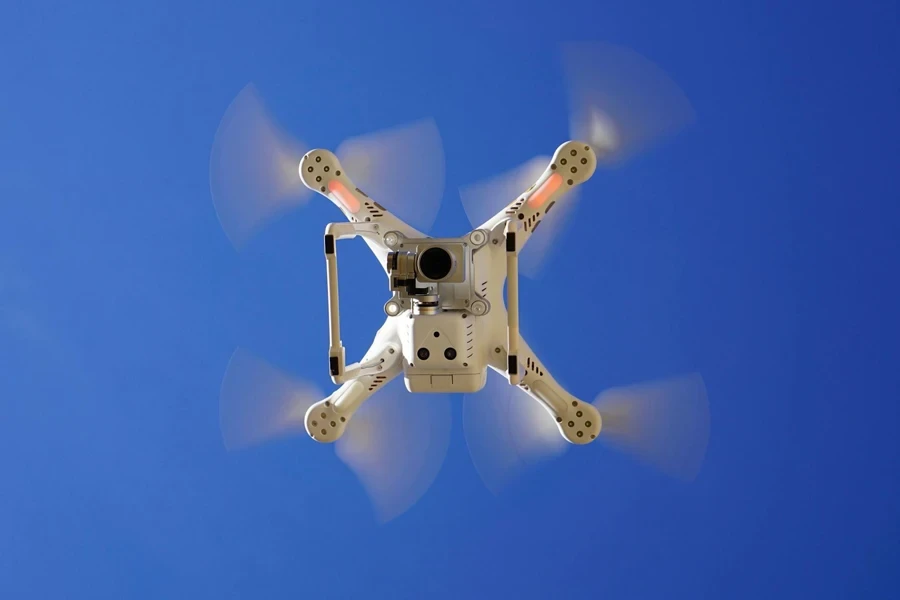Table of Contents
● Introduction
● Market overview
● Essential drone accessories
● Selecting the right drone accessories
● Conclusion
Introduction
In the rapidly advancing sector of drone technology, choosing the right accessories is essential for enhancing aerial capabilities and improving operational efficiency. This guide offers a thorough analysis of the drone accessory market, including the latest trends and a broad array of available options. It is designed to assist businesses and professional drone operators in understanding the critical nuances of drone accessories. By exploring this guide, professionals will gain the necessary insights to either upgrade existing setups or seamlessly integrate new components. This information helps ensure decisions are well-aligned with operational requirements and budget constraints, facilitating informed choices that optimize drone functionality and support business objectives. The focus is on enabling businesses to strategically enhance their drone operations through informed selections tailored to their specific needs.

Market overview
The drone accessory market is experiencing significant growth, with an anticipated Compound Annual Growth Rate (CAGR) of 10.5% from 2022 to 2032 as per LinkedIn Precision Reports. This growth is primarily fueled by the broader adoption of drone technology across diverse industries. Industries are increasingly relying on drones for a range of functions, from aerial photography and film to advanced surveillance and data collection, driving the demand for more sophisticated drone functionalities. Industry reports from Drone Tech Market Insights reveal that this upward trend is supported by continuous technological advancements within the sector. These innovations address the needs of an expanding consumer base that seeks to enhance and expand their drone capabilities. As drone technology becomes more integrated into commercial operations, the accessory market is set to expand, reflecting the evolving demands for advanced, reliable, and versatile drone solutions. This growth not only highlights the increased utility of drones across various sectors but also underscores the importance of continual innovation in maintaining market growth and responding effectively to consumer needs.
As the competitive landscape intensifies, manufacturers are expanding their product lines and integrating advanced technology to solidify their positions in the market. They are increasingly engaging in strategic partnerships and pushing technological boundaries to satisfy the complex requirements of an increasingly tech-aware customer base. According to projections from Drone Tech Market Insights, these efforts are expected to significantly elevate the market’s value. From an estimated US$ 1.2 billion in 2022, the market is projected to grow to over US$ 3.5 billion by 2032. This growth is indicative of the rapid evolution within the sector and underscores the vital role that accessories play in enhancing the functionality of drone operations. Such developments are crucial as they reflect not only the sector’s capacity for innovation but also its ability to adapt to the fast-changing technological landscape, ensuring that drone operations continue to benefit from the latest advancements in accessory technology.

Essential drone accessories
High-capacity batteries
Extended flight times are critical for complex aerial missions, making high-capacity batteries a key accessory for drone operations. These batteries enable drones to operate for longer periods, thereby minimizing downtime and increasing productivity in the field. High-capacity batteries are designed to provide a stable power supply, which is crucial for maintaining consistent performance throughout extended missions. This capability is particularly important for tasks such as environmental monitoring, long-duration filming, and extensive surveillance operations where sustained flight times are required.
Advanced imaging sensors
Advanced imaging sensors are integral for achieving professional-grade photography and precise data collection. These sensors enhance the drone’s capabilities by providing high-resolution images and accurate data, essential for detailed aerial imagery applications. Fields such as geographic mapping, agricultural monitoring, and infrastructure inspection benefit significantly from the detailed perspectives that advanced sensors offer. These high-performance sensors not only capture finer details but also improve the overall quality of the output, making them indispensable for professional drone operators focused on data reliability and image clarity.
Propeller guards
Propeller guards play a vital role in ensuring safety by protecting the drone’s propellers from damage during flights near obstacles or in close proximity to the ground. These accessories are crucial for preserving the integrity and operational readiness of the drone, especially in challenging environments. By shielding the propellers, the guards prevent potential damage that could lead to costly repairs or downtime. Additionally, propeller guards are recommended for use in training scenarios where new pilots are mastering drone controls, thereby reducing the risk of accidents.
Carrying cases
Durable carrying cases are essential for the safe transportation of drones and their accessories. These cases are designed to withstand various environmental conditions, ensuring that all components are protected from impacts, dust, and moisture. The secure storage provided by these cases is crucial for maintaining the drone’s condition, particularly when traveling to remote or rugged locations. Carrying cases often feature custom foam inserts that hold each component snugly in place, offering added protection and organization, which speeds up deployment times and enhances operational efficiency.
GPS modules
GPS modules enhance a drone’s operational capabilities by improving flight stability and providing accurate positional data, crucial for navigational precision and the execution of automated flight paths. These modules are especially important in applications requiring precise location tracking such as surveying, search-and-rescue missions, and scientific research. By enabling precise positioning, GPS modules facilitate complex flight patterns, targeted aerial surveys, and efficient mission planning, all while ensuring safety and compliance with geographic boundaries.
Signal boosters
Signal boosters are crucial for maintaining strong and stable communication between the drone and its controller, particularly in areas where signal interference or obstructions could impact operational control. These devices extend the effective range of the drone, allowing it to operate at greater distances without loss of control. This is particularly advantageous in large-scale operations such as agricultural land management, where the drone may need to cover extensive areas without direct line-of-sight control. Signal boosters ensure that commands are reliably transmitted and received, which is essential for both safety and the accuracy of the drone’s flight path.
Each of these accessories plays a critical role in optimizing drone operations, ensuring that drones are not only capable of performing complex tasks but also offer reliability and safety in diverse operating conditions. Selecting the right accessories involves careful consideration of the operational demands and specific requirements of each mission, allowing professionals to fully utilize the technological capabilities of their drones while expanding the range of possible applications.
Selecting the right drone accessories

Compatibility
Ensuring drone accessories are compatible with specific models is vital to avoid problems and get the best performance. Operators need to verify that each accessory connects properly, whether it’s a gimbal, camera, or other component, by checking physical connections like mounting brackets and cable ports. They should also confirm that the software recognizes the accessory and that it won’t affect the drone’s balance or flight dynamics, which could be thrown off by extra weight or altered shape. For instance, adding a heavier camera might require recalibrating the drone’s stabilization system.
Quality and durability
The quality and durability of drone accessories directly impact their performance and lifespan, making it crucial to choose components from reputable manufacturers that uphold high standards. Accessories like propellers, gimbals, and batteries should be constructed from premium materials, such as carbon fiber or aluminum alloys, to withstand heavy use without compromising functionality. Durability is especially important for accessories exposed to harsh conditions. Waterproof casings need secure seals and high IP ratings to protect electronics in wet environments, and rugged landing gear requires reinforced materials to absorb impacts during landings on uneven terrain. Camera gimbals and stabilizers should maintain balance even after repeated exposure to vibrations and shocks. Batteries must include built-in protections against overcharging, extreme temperatures, and physical damage for consistent power delivery and reliability.
Cost-effectiveness
Evaluating the cost-effectiveness of each drone accessory requires more than just price comparisons; it involves determining the value added relative to its cost. High-end accessories like 4K camera gimbals, long-range batteries, or advanced collision sensors may demand a higher initial investment but can significantly improve utility, minimize the need for future upgrades, and enhance overall performance. For example, a higher-capacity battery that doubles flight time can be a worthy investment if it reduces downtime during commercial shoots or mapping missions. Operators should assess their specific needs, such as whether a waterproof casing is essential for filming in challenging environments or if a thermal imaging camera will expand their business capabilities.
Ease of use
Accessories should enhance operational efficiency rather than complicate it, making ease of use an essential consideration. Accessories that are easy to install, configure, and maintain save valuable time and minimize downtime in the field. For instance, quick-release mounts that don’t require tools allow operators to switch camera gimbals or propellers swiftly, while modular battery systems with clear status indicators streamline power management. Clear instructions and intuitive software interfaces are crucial for proper calibration and seamless integration with existing controls. Drone-specific controllers with programmable buttons or app-based settings can simplify complex flight tasks, enabling operators to focus on creative or data-gathering goals. Furthermore, accessories with built-in diagnostics or maintenance alerts help identify issues early, preventing costly errors or accidents.
Future-proofing
With the rapid pace of technological advancement in the drone industry, selecting accessories that can adapt to future changes is a wise strategy to maximize long-term value. Future-proofing involves choosing components designed to remain compatible with upcoming drone models and technological upgrades. For instance, modular gimbal systems that allow different camera types or payloads enable easy customization as needs evolve. Smart battery packs adhering to standardized sizes and voltage specifications offer cross-compatibility with new drone platforms, ensuring longevity and reducing replacement costs. Accessories like controllers or flight software that follow universal protocols or specific frequencies like 2.4 GHz ensure seamless integration with future drone models. Payload systems and data processing software should also be compatible with emerging technologies, such as AI-based image recognition or 5G network connectivity, to remain relevant in more sophisticated applications.
Weight and balance
The weight and balance of a drone are crucial for flight performance, directly affecting its efficiency and safety. Adding accessories like camera gimbals, additional sensors, or extra batteries can significantly impact these factors if not properly considered. For instance, heavy gimbals or extended batteries mounted on the front or underside can shift the drone’s center of gravity, leading to uneven weight distribution that makes precise flight control challenging. This imbalance can result in increased battery drain, erratic movements, or even mid-air stalling. Properly balanced drones ensure optimal stability and smooth control, which is essential for tasks requiring precision, such as aerial photography or detailed inspections. Operators should weigh accessories carefully and ensure they are mounted symmetrically or counterbalanced to maintain the drone’s center of gravity, enabling accurate maneuverability even in adverse weather conditions or during long-duration flights.
Regulatory compliance
Drone operations are subject to regulatory requirements that can vary significantly by region or application, and certain accessories can impact these classifications. For instance, extended-range transmitters might exceed legal distance limits in certain areas, and thermal or zoom cameras could raise privacy concerns. These accessories may shift the drone into a category requiring stricter regulations, such as special pilot licensing or mandatory flight logging. Operators must understand how adding such accessories affects their compliance with local laws to avoid penalties or operational restrictions. For example, the addition of an extended-range transmitter might necessitate operating only within visual line-of-sight in some jurisdictions. Meanwhile, the use of cameras with high-resolution zoom lenses may require special permits if they encroach on privacy laws or sensitive airspace.
Conclusion
For business entities and professional drone operators, the selection of appropriate drone accessories is essential for maximizing aerial capabilities and enhancing operational efficiency. Important factors such as compatibility, quality, cost-effectiveness, ease of use, and adaptability to future technological changes are pivotal in choosing the right accessories. These considerations ensure that selected accessories not only fulfill current operational requirements but are also viable for upcoming technological shifts. Equipped with the right accessories, drones transcend their basic function as mere aerial cameras and become multifunctional tools. They are capable of executing a broad spectrum of tasks, delivering outstanding performance in various scenarios—from complex surveying missions to sophisticated filmmaking. This enables professionals to leverage drone technology to its fullest potential, ensuring that investments in drone accessories yield substantial returns through versatile and efficient application capabilities.



